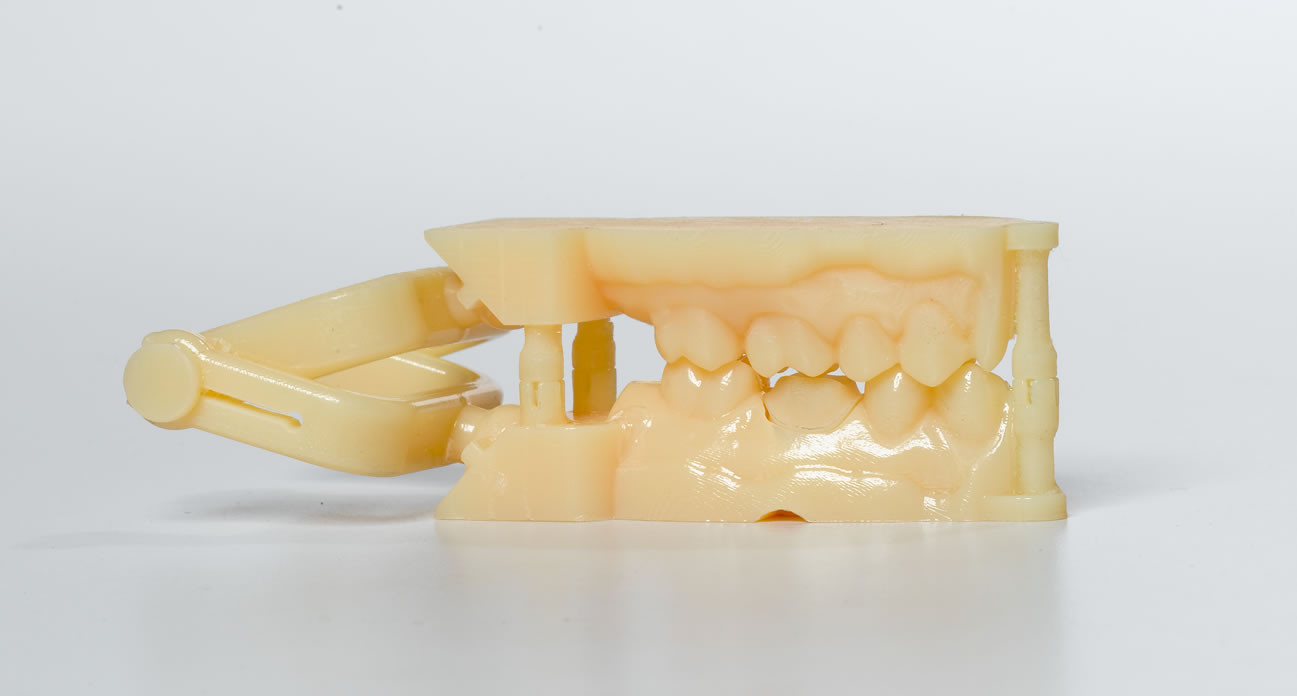The Silent 3D Printing Revolution in Dentistry
The 3D maker movement is exploding in popularity, and new possibilities being explored in terms of what 3D printers can do for the common man. One of the fastest changing applications of 3D printing is in dentistry.
Replacing Antiquated Surgeries
Getting a crown, bridge, or a denture is usually a long and arduous process, requiring multiple trips to the dentist, lots of fees, and a series of painful and uncomfortable surgeries. This is one of the main reasons why the prospect of a visit to the dentist’s fills patients hearts’ with terror.
When significant portions of your teeth need repaired, dentists usually take impressions of your mouth. If the measurements of the impressions are off by a few centimeters, it could spell disaster for the patient during surgery. Usually, the patient would be required to come back in for another visit. Dental crowns, bridges, and dentures are often made by hand in the factory, which can often result in imperfections.
This either means that the patient has go through another six-month wait for a properly fitting cap, or get used to wearing false teeth that are a poor fit. These poorly fitted teeth can later contribute to a variety of additional problems for the patient, from jaw aches, to cuts and bruises on the inside of the mouth.
New and Improved Restorative Dentistry
As you can see there’s a lot of room for improvement in the world of dental surgery. 3D printers are actively solving this problem. To create dental caps today, all you need is a 3D printer and a digital camera.
The process of creating a crown with a 3D printers is much simpler than the traditional manufacturing technique widely used today. First, the dentist creates a digital image of the damaged tooth, which is turned into a 3D image. Then, the machine software takes care of crafting the dimensions of the mould to fit precisely over the damaged tooth. The image can even be manually tweaked by the dentist to better serve the needs of a particular patient.
After the 3D image is completed, all it takes is a push of a button to send the image to the printer. Creating a 3D object the size of a tooth takes no more than ten minutes, after which the freshly minted cap can be placed in the patient’s mouth. The entire process is wrapped up in a single visit, with the added benefit of dramatically reducing the cost of the procedure. This allows dentist offices to save money on the cost of producing the crowns, bridges, and dentures allowing them to increase their profit margins without cost to patient comfort.
Cheaper Dentist Guides
Implants are usually the most feared dental procedure. Implant surgeries are performed mostly by hand. During the surgery the dentist looks at photo scans of the patient’s jaw, and uses the photos as a guide on where to place the drill in the patient’s mouth. As you can imagine, guessing on the best location to insert the screw into the patient’s jaw for an implant is far from ideal.
There are more sophisticated ways of pinpointing the best location to drill. Dentist can order bespoke drilling guides which are manufactured at specialized facilities. While bespoke drilling guides dramatically improve the accuracy of implant surgery, they have the double flaw of taking a long time to create and adding considerable cost to the operation.
Enter the 3D printer. Companies such as the Implant Educators are helping dentists create their own drilling guides in their offices at far less cost. Guides created from the 3D printer cost as little as 15 dollars. Moreover, the new procedure begins in the morning with scanning the patient’s jaw, and ends the same afternoon with the guide being created and used to perform the surgery.
Dentures
Of course, 3D printers can do more than create single tooth caps. They can be used to create an entire set of dentures that fit perfectly in the patient’s mouth. Companies such as the Radboudumc in Nijmegen have been engaged in creating 3D printed dentures with spectacular results. Patients can receive their dentures six months earlier than they would have if the dentures had been made in factories using traditional methods.
Another advantage that 3D printing offers is that it is accurate to within a tenth of a millimeter. This means 3D printed dental parts fit much better in the patient’s mouth and offer fewer problems in the long run. Patients who have received 3D prosthesis have routinely reported a high level of satisfaction with their new set of dentures, and say that they feel the 3D prosthesis are a much more natural fit to their jaws than the earlier types of dentures.
Everyday, new materials are being tested to see which would result in better quality dentures. One of the most successful additions to this group are 3D teeth created from antimicrobial plastic. This specially prepared plastic has the ability to kill bacteria which are responsible for tooth decay on contact. What this means is that the new set of teeth a patient receives remain pristine and white for a long time and it leads to an overall healthier mouth.
The field of dentistry is finally opening itself to the possibilities of 3D assisted dental surgery, and there is still a lot of room for growth. That is why experts remain convinced that the best innovations in the field are still to come.
Image via Javelin-Tech.





